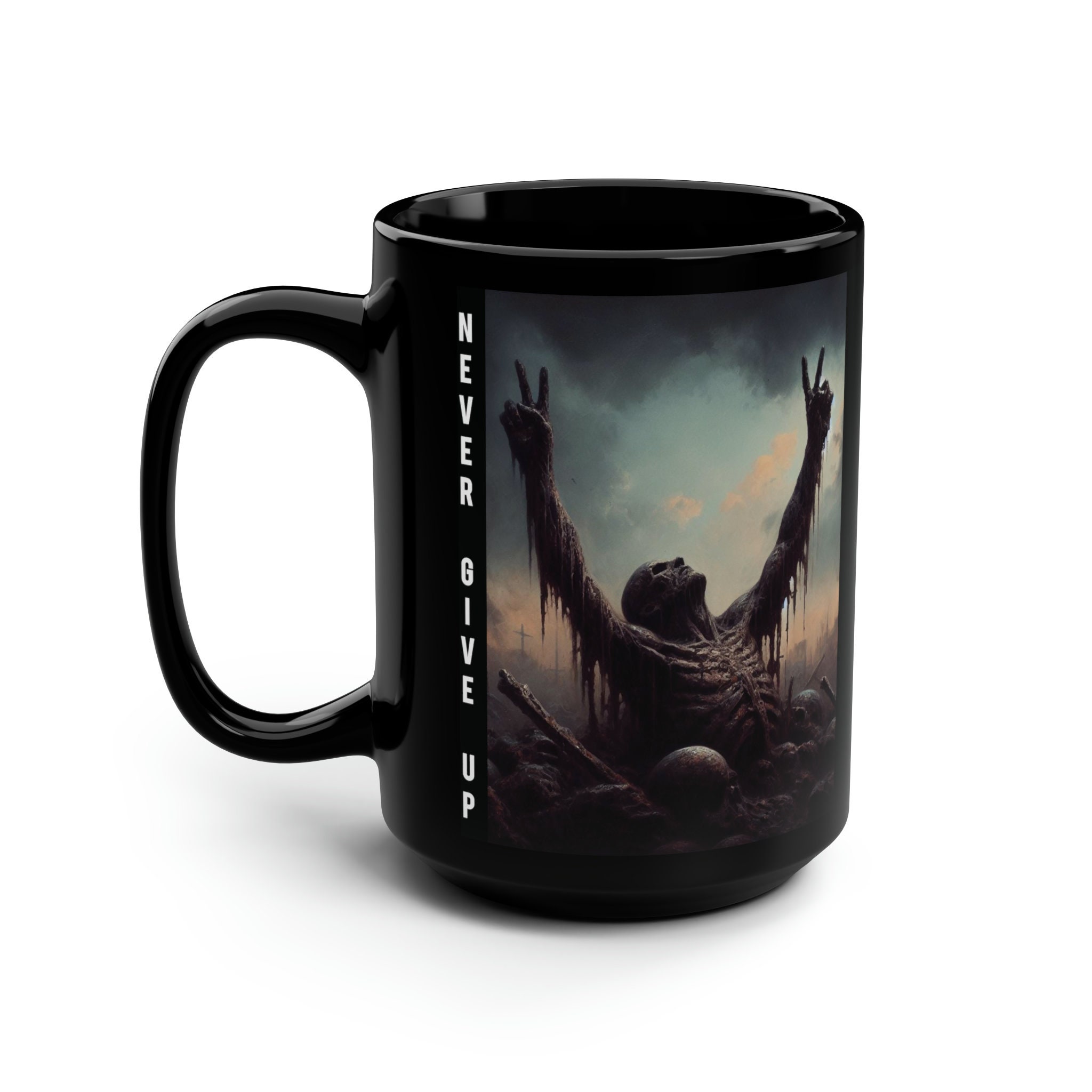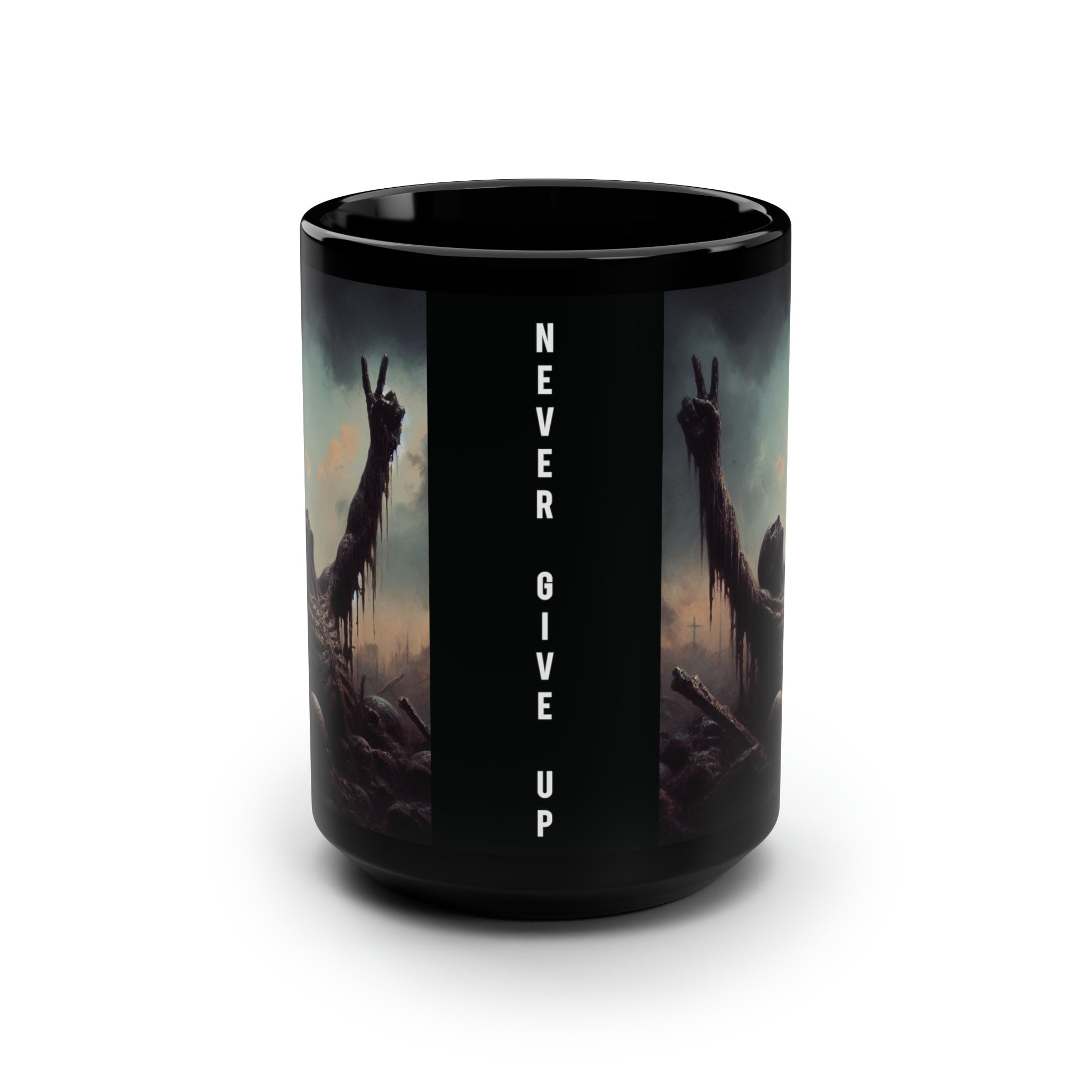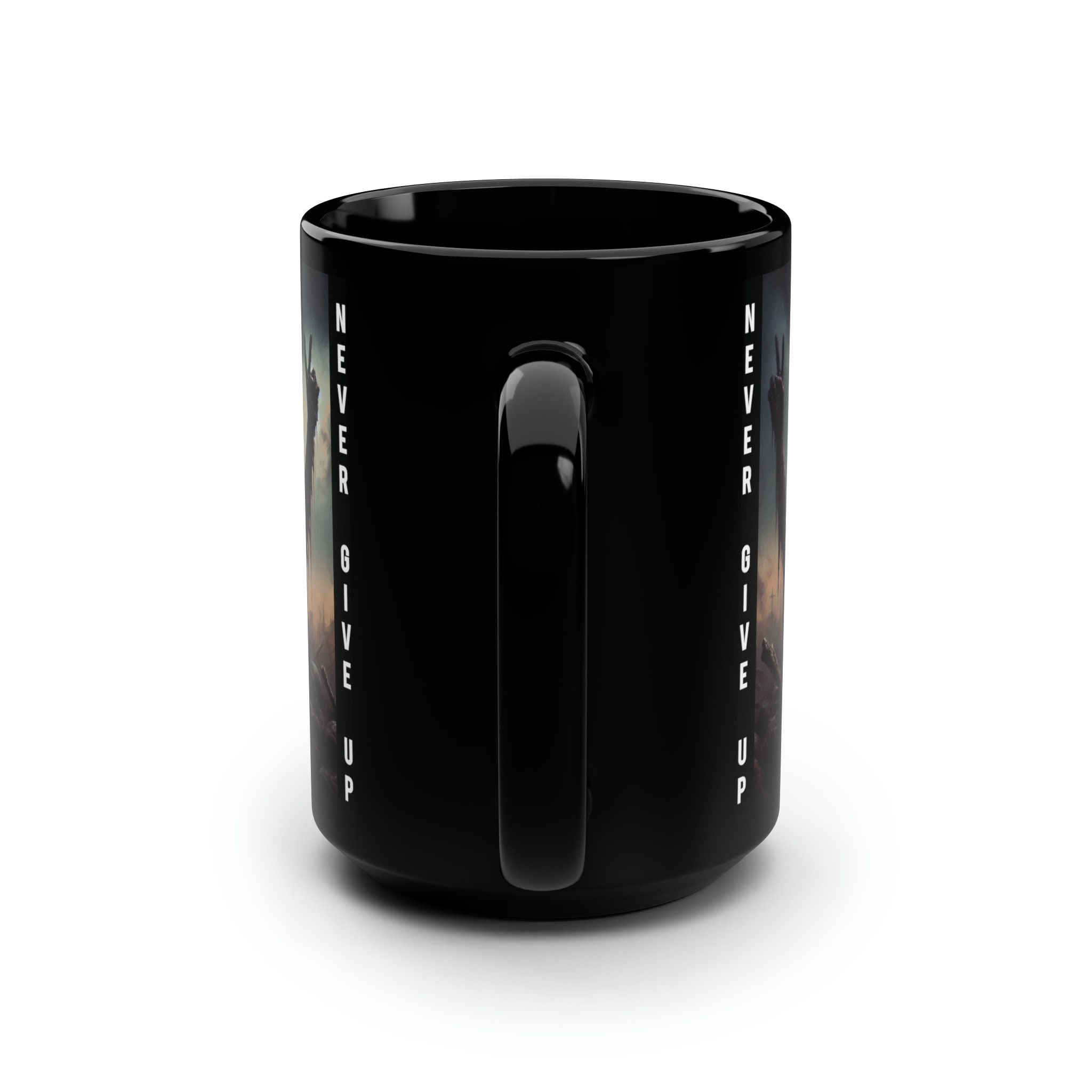"V For Victory" crafts a narrative as harrowing as it is profound, a haunting depiction of the echoes left behind by a catastrophic event. This visual essay delves into the heart of desolation, its center dominated by a figure emblematic of both death and defiance. The skeletal form, a ghostly vestige of humanity, is presented in a state of partial decomposition, its remains cloaked in a viscous, darkened sheen. Even so, this remnant of a once living being conveys a powerful message through its posture. The hands, though decaying, are raised in a 'V' formation, a powerful symbol of victory. They reach toward the canvas of the sky, a tumultuous expanse that melds the grim grays of despair and the toxic looking ground haze with a patch of light blue sky and fluffly white clouds, symbolizing the future possibility of hope.
This sky tells a story of its own, one of turbulence and ongoing strife, casting a light, or perhaps a shadow, on the scene below. Below, the land bears the scars of war, littered with skulls and bones, the remnants of lives lost, and the debris of what once was. Within this desolate vista stands a singular cross, solitary yet resilient, serving as a lighthouse of sorts for any who might seek direction or solace amidst the chaos.
The solitary 'V' gesture of the skeletal figure, while historically a beacon of triumph, in this setting takes on a poignant, almost paradoxical meaning. It embodies an indomitable spirit of resistance, a testament to the enduring human will that persists even when the battle appears to have been lost. This gesture becomes a silent but resonant cry, proclaiming that even in the shadow of overwhelming destruction and defeat, hope and resilience are not only present but powerful.
Beyond the immediate symbolism of defiance, the cross standing tall amidst the ruins hints at an additional layer of meaning, a spiritual or religious undertone that speaks to faith, redemption, and the fleeting nature of mortal endeavors. The cross, often associated with salvation, stands as a reminder that amidst the havoc wrought by human hands, there remains a possibility of guidance, a beacon for those searching for hope in a seemingly forsaken landscape.
This complex tableau invites contemplation on the duality of life and death, victory and defeat, suggesting a cyclical understanding of our existence. The war-ravaged terrain is a stark testament to the devastation that conflict leaves in its wake. And yet, the enduring 'V' sign offers a powerful counterpoint, a symbol of resistance that refuses to be quelled, a spirit that remains undefeated even in the direst of times. This image, thus, becomes not just a reflection of despair, but also a resilient harbinger of undying hope and the everlasting human spirit.
Never run out of your favorite hot drink! Bigger size durable ceramic mug in always fashionable black color. High quality sublimation printing makes it an appreciated gift to every true coffee or tea lover, who always asks for a refill.
.: Black ceramic
.: 15 oz (0.44 l)
.: Rounded corners
.: C-handle
Shipping from United States
Processing time
1-7 business days
Customs and import taxes
Buyers are responsible for any customs and import taxes that may apply. I'm not responsible for delays due to customs.
Payment Options
Returns & Exchanges
I gladly accept returns and exchanges
Just contact me within: 14 days of delivery
Ship items back to me within: 30 days of delivery
I don't accept cancellations
But please contact me if you have any problems with your order.
The following items can't be returned or exchanged
Because of the nature of these items, unless they arrive damaged or defective, I can't accept returns for:
- Custom or personalized orders
- Perishable products (like food or flowers)
- Digital downloads
- Intimate items (for health/hygiene reasons)
Conditions of return
Buyers are responsible for return shipping costs. If the item is not returned in its original condition, the buyer is responsible for any loss in value.
Frequently Asked Questions
What is All-Over-Print (AOP)?
All-Over Print (AOP) is a printing method that uses dye-sublimation to print a design onto polyester. During the dye sublimation process the dye is absorbed into the fabric. Since, it is not printed on the surface, like most t-shirts, it provides for a fantastic soft-to-the-touch feel and superior breathability.
AOP is a more time consuming method than screen printing or direct-to-garment (DTG) printing, so the prices are higher and the production times are longer, but the results are most definitely worth it.
Advantages of AOP:
The design won't peel off, unlike typical screen printing.
The design is part of the fabric of the item, so it will last as long as the item does.
The intensity of color is often unmatched.
What is Giclée?
Giclée (pronounced zhee-CLAY or often gee-CLAY) is a printing process that creates a museum quality, archival print. Special acid-free, paper is printed with fade resistant ink using a state-of-the-art, large format inkjet printer.
What is a gallery wrap canvas?
Gallery wrap is a style of displaying a canvas that doesn't show any visible staples or nails holding the fabric to the wooden stretcher bars. This style of canvas is intended to be hung unframed.
What is a gallery mirror wrap canvas?
Mirrored edges (mirror wrap) is used to show the whole image on the main surface, rather than printing the edges of the image on the sides (image wrap) of the canvas frame. It is usually used when there is necessary detail on the edges of the image. Image wrap is used when the focal point of the image is in the center.



